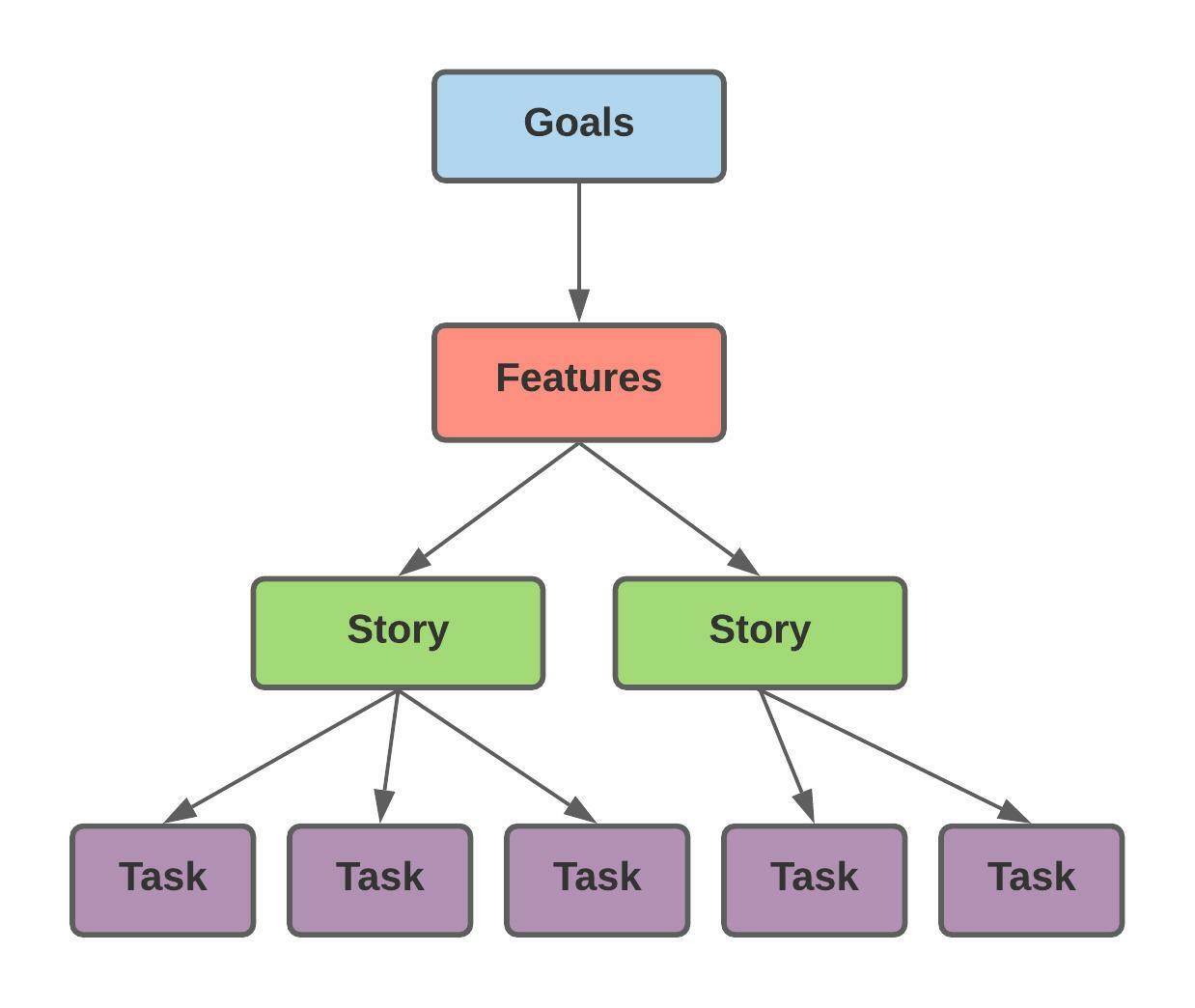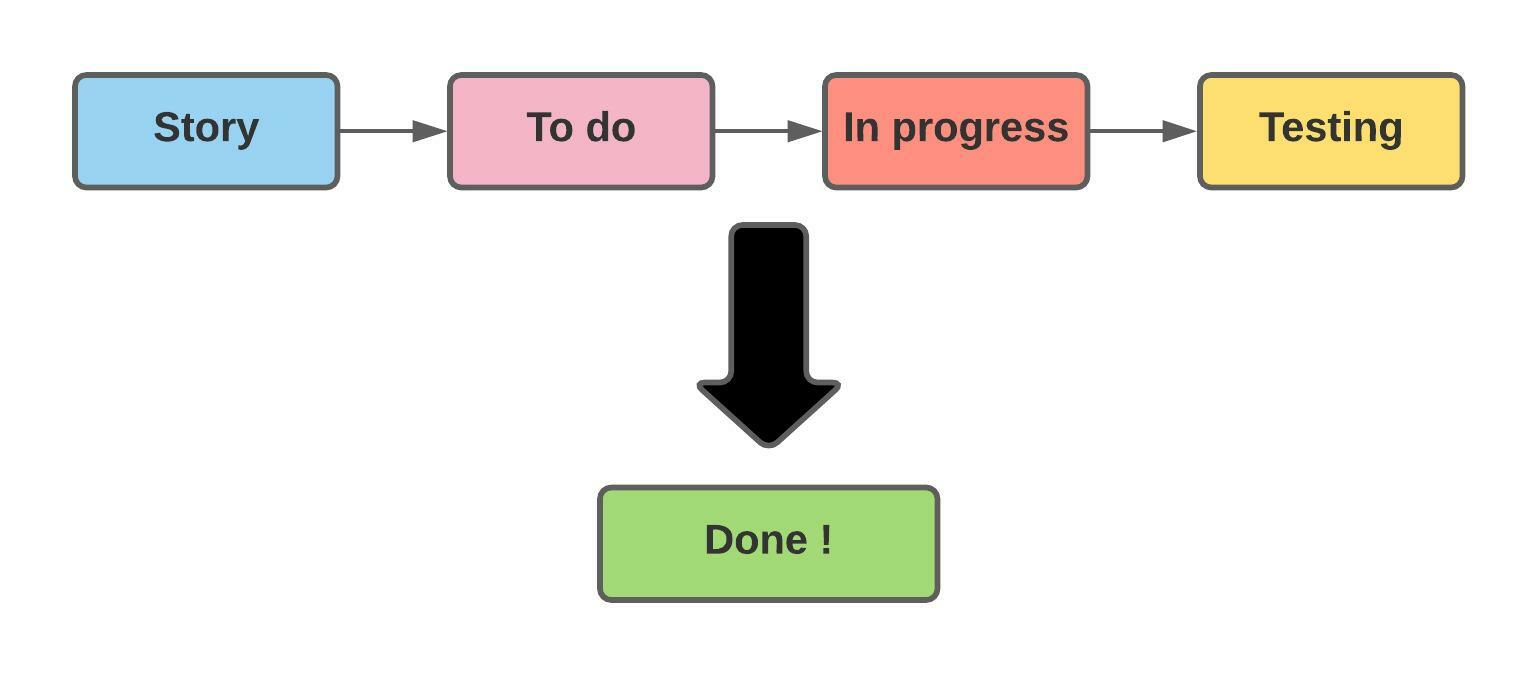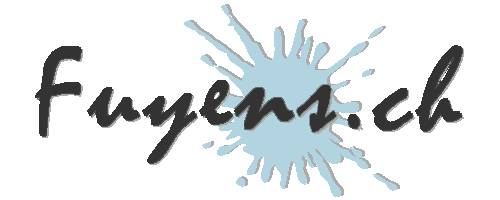Introduction
This publication on the Agile methodology defines the basic vocabulary for the uninitiated, even the undecided to whom the words Scrum, Sprint, Product owner and other such terms were once blown around. The intention is to explain in a few lines what Agile methodology is and why it was invented.
Definition
The Scrum
The term comes from rugby where two teams stand on a line, arms intertwined, pushing toward the opposing team, trying to take control of the ball. This is then kicked back, to other players on their side.In Agile project management, the scrum consists of a small team that “takes control” of a task in a scrum, completes it, and gives it back upstream, to others in charge of the overall project.
It should be noted, however, that a scrum is not, like Rugby, a free-for-all, but a very short session. Most of the time, it lasts about twenty minutes, in a standing position. Its purpose is to take control of a task, define its contours and plan its progress.
The Sprint
The sprint is not a priori, a speed race, but its name easily indicates that there is a notion of speed.
In Agile project management, the sprint is a time-bound task (hence the notion of speed). It consists of four major events (planning, scrum, review and retrospective). The sprint is the completion of a more or less complex task in a time span not exceeding four weeks.
The Product Owner (PO)
The Product Owner is one of the key figures on a management team working in Agile mode. The Product Owner is the person who represents the customer. The Product Owner is going to have to analyze, understand, organize and plan a task with the customer and document their requirements in a backlog. The Product Owner, who is often the Business Analyst, has a double role. On the one hand, he discusses with the customer the project tasks to be performed, and on the other, will represent him in the Agile team.
The sponsor
In project management, The sponsor is not a patron who will donate money in exchange for advertising return. A sponsor is the person who will pay to perform a task. The sponsor is the person (or persons) who asks an Agile team to provide work. In other words, it is the customer mentioned above. This is the most important person in project management. They are the one who will decide whether the project will be completed or not.
The Product Backlog
The backlog or product backlog, is the notebook (or computer application), in which we will describe all the functions to be performed to carry out a task. This backlog is the responsibility of the Product Owner and the project manager (outside the Agile team). It is in the backlog that all the functional and non-functional requirements of the project will be described.
The Scrum Master
Another important person in Agile management is the Scrum Master. The latter will have the heavy task of leading the Agile team. He is going to have to manage the four tasks defined in the preamble of this publication, planning, daily scrum, review and retrospective.
The Agile or Scrum team
The term doesn’t matter much. It is the team that will be in charge of completing the tasks, testing to be done in part with a quality team, reviews and of course delivering the finished product.
The Agile Way
Now that the main vocabulary has been discussed, it’s time to move on to explaining how an Agile project works.
Starting a project
Agile management is, at the beginning, not really different from a so-called classical method. There is always a sponsor who decides that a project is going to be initiated, a project manager who will plan the available time and budget and a business analyst who will analyze, elicit, scope and describe the project’s features in a backlog. So far, nothing new under the sun.
The planning of a Sprint
During the first work session that takes place between the Business Analyst and the Scrum Master, they will have to go through the backlog and define the tasks to be performed. It is the Scrum Master’s job to conduct the planning session, which lasts about a day. It is used to define the duration of a Sprint, which will take place over a period of four weeks maximum. It is also used to define in the Sprint Backlog (not to be confused with the Product Backlog), all the tasks that will be done during the Sprint. The planning will also serve to distribute the work to be done in the Scrum team.

Some topics that are bound to come up during this session:
- What are the goals of the Sprint ?
- What are the priority items in the product backlog that can be completed in production ?
- What is the volume of work that can be turned in by the Scrum team in the time allotted by the Sprint ?
- How do you convert the tasks to be completed ?
Note that it is always possible to modify the scope of tasks to be performed during a Sprint, but in no case to exceed the maximum time of twenty days.
The daily scrum
The daily scrum is a session within the Scrum team. It is used to synchronize, measure the progress of the project and adjust accordingly according to the action plan.

In each scrum session, which does not exceed a maximum of twenty minutes at most, the Scrum Master will need to ask each participant three questions:
- What tasks were completed yesterday that make an improvement in order to achieve the goal?
- What tasks are going to be completed today to achieve the goal?
- What obstacles are preventing a task from progressing?
Speech time in a scrum is very short, so it is not during this scrum that solutions to achieve the goal will be discussed. All of these topics are to be discussed outside of the scrum session.
The Sprint Review
The Sprint review is performed outside the Agile team. A review takes place at the end of each Sprint and lasts about half a day. It is the product Owner who has the task of inviting all project stakeholders (Sponsor, experts, key users, …). The purpose of the review is to present the work already done and to gather feedback that the stakeholders have been able to test or see. It allows to reinforce the collaboration between the customer and the Agile team in charge of the development. It can also be used to discuss the difficulties encountered during the progress of the project. Finally, the outline of the next Sprint is decided.
The retrospective
The retrospective can take place at the same time as the review or independently. It is done in the presence of the Product Owner, the Sponsor, the Scrum Master and the project manager. It lasts about two to three hours for a Sprint. It serves as a departure for a new Sprint. It is during the retrospective that we discuss the problems and how we will try to solve them. It is also during this session that we decide if the project deserves to continue or be abandoned.
One of the things that makes the Agile methodology interesting is this power of decision that the sponsor has to continue or abandon a project each month, at the end of a Sprint. At each retrospective, the sponsor can announce his intention to initiate a new Sprint, to abandon the project or to refocus it. This avoids a lot of wasted time, frustration and wasted money.
The final word
Here is a summary of the key players in the Agile methodology. Agile and Scrum activities not only allow for a better overview of the project and its tasks, but also better communication between all project stakeholders. It gives everyone a chance to express themselves and give their opinion, from the main sponsor to the end user. Scrum also allows you to abandon a project or refocus it along the way, which offers unparalleled flexibility and avoids a lot of frustration.



